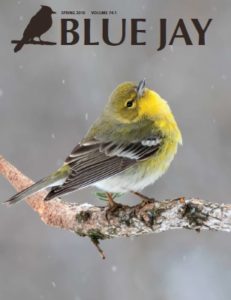Back in 2006, Lewis Cocks started a grassroots initiative, the Manitoba Chimney Swift Initiative, to build artificial towers for Chimney Swifts in Manitoba. A declining and threatened species, the Chimney Swift had spent a century breeding in chimneys, which were usually attached to buildings. The Kyles in Texas took the chimney idea and designed and built artificial free-standing towers, which were being replicated in other US states. Build it and they will come was therefore the mantra in Manitoba, funding was secured and several towers were built following the successful tower plans published in the Kyles book ‘Chimney Swift Towers: New Habit for America’s Mysterious Birds. Unfortunately, and with the best will in the world, these towers were never used by Chimney Swifts in Manitoba.
After much thought and head scratching, a new free-standing artificial tower was built by the Province of Manitoba in 2015 as a temporary replacement for the demolished Old Grace Hospital chimney. It stood for a single season and was eventually moved to the Assiniboine Park Zoo in 2018 with support from the province, Assiniboine Park Zoo and Nature Manitoba’s Bluebird Fund founded by Guent Salzmann. This tower had many key differences from the original MCSI towers, not least it is much taller and contains insulation to help stabilise the internal temperature of the tower. We believed that the original towers were unable to provide warm enough temperatures for Chimney Swifts returning to our cooler climate in the spring. We are therefore delighted that the new tower has hosted successful breeding attempts in 2019 and 2020.

A new article published in Nature Saskatchewan’s Blue Jay journal describes the process from the towers beginnings up to the point where we were able to confirm breeding in 2019. The article has been co-written by staff and volunteers from the Province of Manitoba, Assiniboine Park Zoo and MCSI.
The Blue Jay have kindly allowed us to publish the piece and you can now read it for free on the MCSI website .
The Resources and Links page on the MCSI website contains a number of other primary publications from MCSI and our friends at the London Ontario SwiftWatch and we would really encourage anyone interested in learning more about Chimney Swifts to dive in and read some of the excellent information. You can also subscribe to the Blue Jay. Original content this edition includes articles on fisher re-introduction and its impacts in Riding Mountain National Park and the use of prairie potholes by swallows.
— Tim Poole
